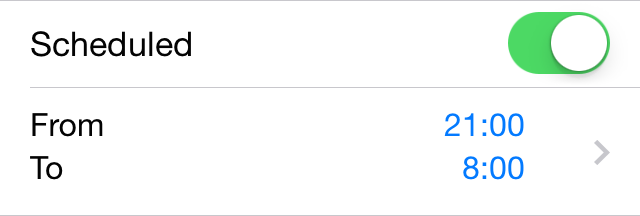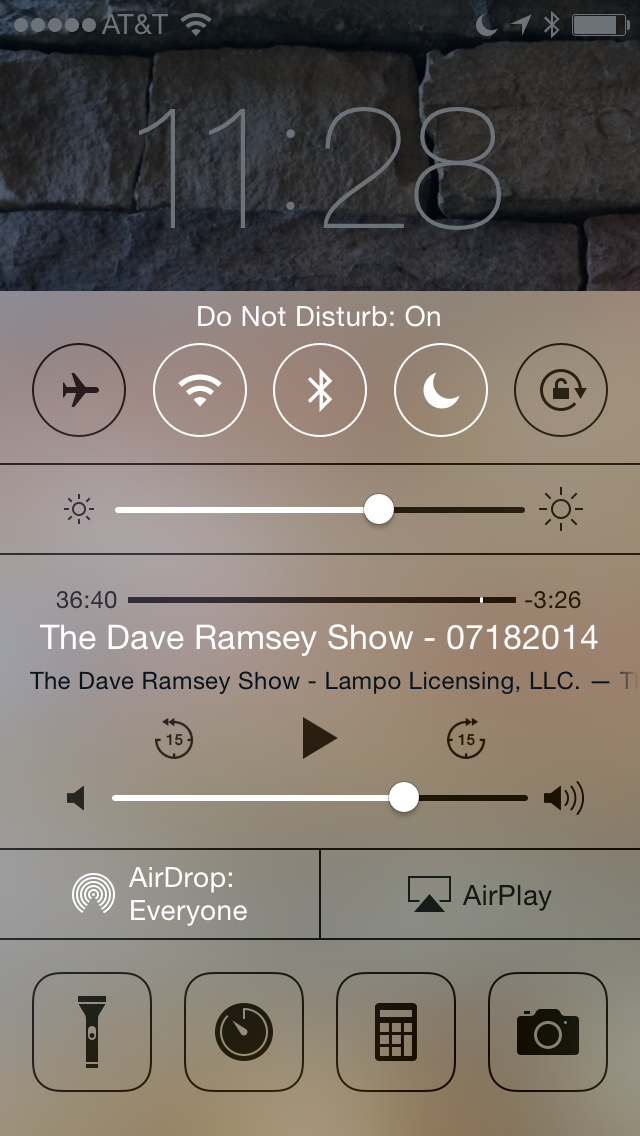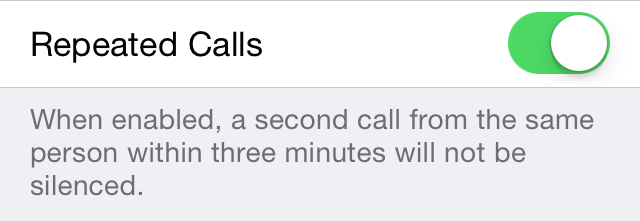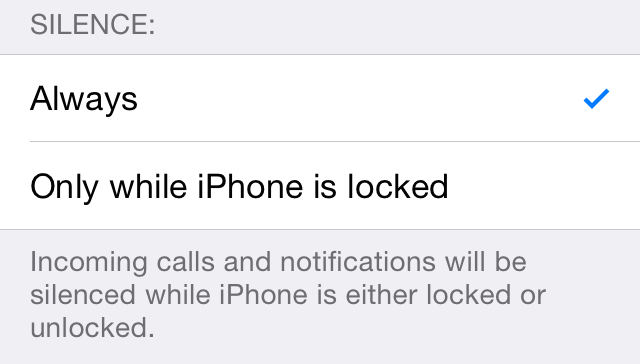Smartphones are the best and worst thing to happen to productivity in the last ten years. On the plus side, you have 24/7 access to a world of information. The downside is that the world has 24/7 access to you.
Apps and websites can send you notifications whenever something “important” happens. That importance (and our willingness to be interrupted by it) can vary with what time it is, where we are, and what we’re doing. If I get an iMessage while I’m watching TV, I probably don’t mind being notified right away. But if it’s 2:00 am, or I’m in a meeting, or I’m trying to focus, it can probably wait.
Fortunately, your smartphone can help you out, sometimes automatically. Here’s how to configure iOS’s Do Not Disturb feature to help you get more done during the day and sleep better at night.
Most of the Do Not Disturb settings are in the Settings app, under Do Not Disturb. Once you set it up, you shouldn’t need to go back into Settings to use it. You can quickly turn Do Not Disturb on or off from Control Center or using Siri. My favorite way to turn it on is “Siri, hold my calls.”
When Do Not Disturb is active, your phone (or iPad or iPod touch) isn’t going to vibrate, play sounds, or turn on the screen if you aren’t using it. When Do Not Disturb is active, a small moon icon will appear in the status bar.
Scheduling Do Not Disturb
The first thing you should do with Do Not Disturb is to set up a schedule for it. Once the schedule is set, your phone will automatically suppress notifications while you sleep.
Schedule Do Not Disturb to start when you’re ready to start your bedtime routine. This reduces the number of interruptions that come in when you should be focused on one thing: getting ready for bed. Similarly, give yourself some extra quiet time in the morning before letting the world have automatic access to you.

Manually Enabling Do Not Disturb
You can turn Do Not Disturb on and off at any time in Control Center. Just swipe up from the bottom of the screen and tap the Do Not Disturb (moon) icon.
Pro tip: In some applications, when the keyboard is showing, it can be difficult to swipe up from the bottom of the screen without pressing keys instead. To get to Control Center without leaving the app you’re in, double-press the Home button. When the app switcher comes up, you can swipe up for Control Center. When you dismiss Control Center, you can return right to what you were doing.

Control Center with Do Not Disturb enabled. You can also see the moon icon in the status bar.
When you manually enable Do Not Disturb, it will automatically turn off the next time it’s scheduled to turn off. For example, if Do Not Disturb is scheduled from 9:00 pm to 8:00 am and you manually enable it for a meeting at 3:00 pm, it will come back on at 8:00 am tomorrow morning. If you don’t have a schedule set, Do Not Disturb will stay on until you turn it off.
Emergency Phone Calls
“But what if something really urgent (and important) happens, and someone needs to reach me?” There are two ways the Do Not Disturb handles this.
First, you can specify a group of contacts whose calls will not be blocked. If any of these people call, the phone will ring like normal. The simplest way to set this up is to use your Favorites list. There are only a few people who might need to reach me at 2:00 am.

Second, have you ever needed to get ahold of someone, and when you got their voicemail, you didn’t leave a message, but called them right back, figuring that maybe they just didn’t hear the phone, or weren’t able to get to it in time? We all do that, and Do Not Disturb recognizes what’s going on. With your permission, if someone calls you twice in a three-minute window, Do Not Disturb will allow the call through. This way, your phone knows you’d rather not be disturbed, but if somebody really needs to get ahold of you, it’s okay.

Texting in the Library (or Church)
One thing that caught me by surprise when I first started using Do Not Disturb: it only suppresses notifications when the phone is locked. If you’re using the phone, the thinking goes, then it’s not going to disturb you by letting the notification through.
My family is spread out across multiple time zones (and continents). More often than not, some of them will start chatting (we have a group iMessage conversation set up) while I’m at church. When the phone is in my pocket, Do Not Disturb keeps it quiet, but when I pulled it out to access the scriptures or a manual, it would start making noise again. Oops.
Fortunately, Do Not Disturb covers this, too. The default setting is that it’s okay for the phone to play sounds while Do Not Disturb is on. If you set Silence to Always, the phone will still be silent, even when you’re using it. Much less disruptive.

One of the key elements of time management is managing what has your attention. Do Not Disturb is a great tool for helping control when your phone can interrupt you, but it’s not going to solve all of your distraction problems. Even without alerts popping up, you may still need to train yourself not to compulsively check Facebook every ten minutes. (You may need to take more drastic steps, like turning on airplane mode or—gasp!—turning off your phone.)
Question: Where do you not want to be disturbed? Share your thoughts in the comments, on Twitter, LinkedIn, or Facebook.

